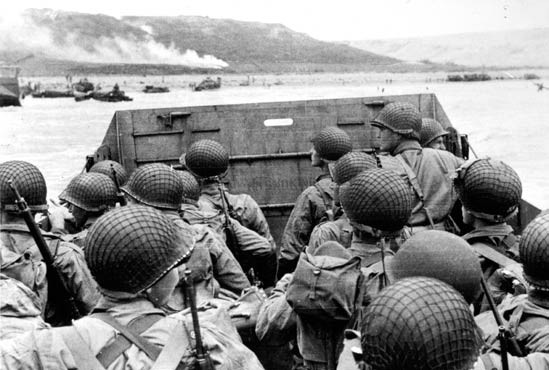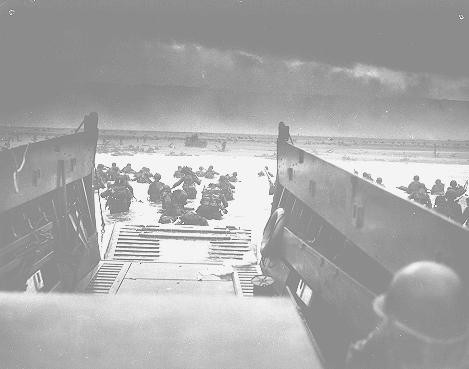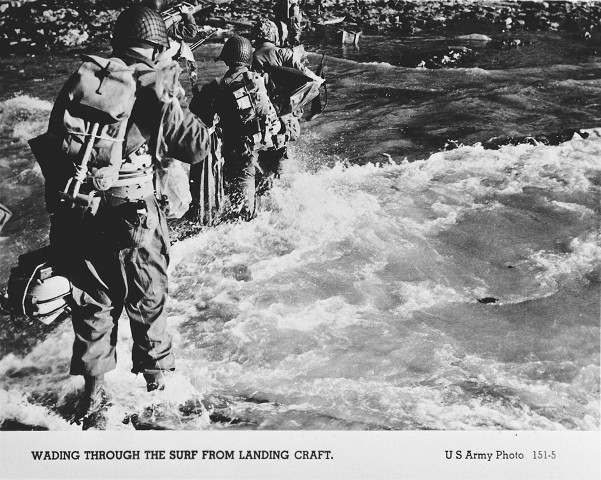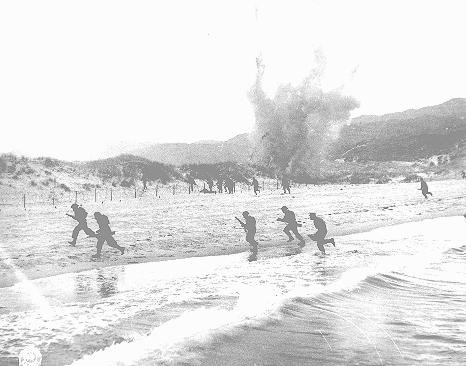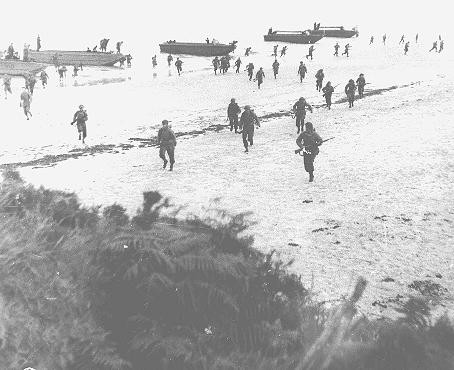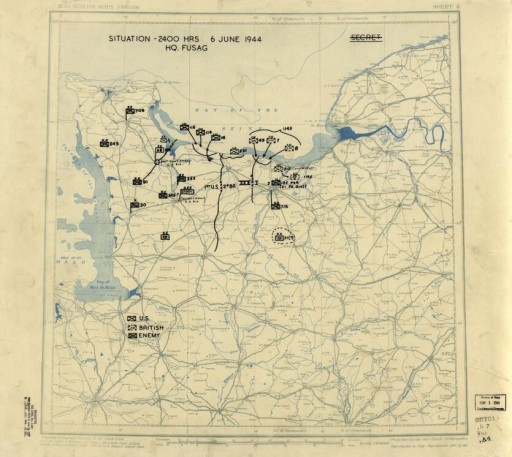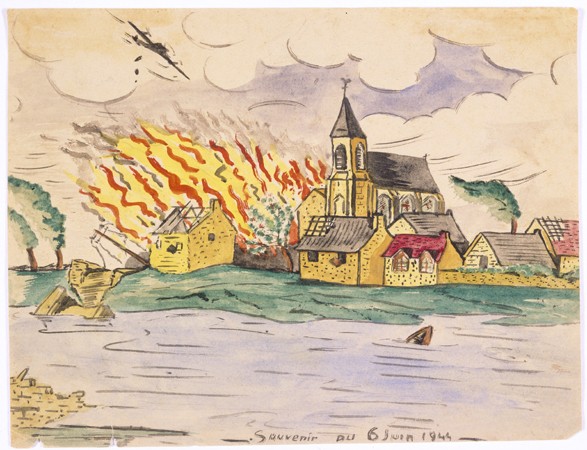
World War II: In Depth
The mass murder of Europe’s Jews took place in the context of World War II. As German troops invaded and occupied more and more territory in Europe, the Soviet Union, and North Africa, the regime’s racial and antisemitic policies became more radical, moving from persecution to genocide.
German and Japanese Expansion
Nazi Germany and Imperial Japan unleashed World War II with the intention of establishing, by military conquest, a permanent dominance over Europe and Asia respectively. These two nations were the most significant members of the Axis partnership, which was based on anti-Communism and dissatisfaction with the world order after World War I.
Under the leadership of dictator Adolf Hitler, Nazi Germany aimed at the acquisition of a vast, new empire of "living space" (Lebensraum) in eastern Europe and the Soviet Union. The Nazi leadership calculated that the realization of German hegemony in Europe would require war, and began planning a European war from the day the Nazis came to power in late January 1933.
Imperial Japan followed a policy of military conquest with support of its Emperor, military establishment, and many in the educated elite who sought Japanese rule and influence throughout East Asia and the Pacific Ocean. Germany and Japan formed an anti-Communist front aimed at the Soviet Union in 1936. That same year Fascist Italy and Nazi Germany formed the Axis alliance, shortly after Italy completed its brutal and successful conquest of Ethiopia.
Japan had initiated its policy of military conquest by invading Chinese Manchuria in September 1931. Six years later, in July 1937, Japan invaded China proper to unleash World War II in Asia.
Invasion of Poland
Germany incorporated Austria and the Czech lands without having to resort to war in 1938 and 1939. With a pact of nonaggression, Germany secured the neutrality of the Soviet Union, ruled by dictator Joseph Stalin. Germany then invaded Poland on September 1, 1939, beginning World War II in Europe.
Having permitted Nazi Germany to destroy the interwar Czechoslovak state, Britain and France had guaranteed the integrity of Poland's borders in April 1939. They responded to the German invasion of Poland by declaring war on Germany on September 3. Within a month, German and Soviet forces conquered Poland and partitioned the Polish state.
Invasion of Norway and Denmark
The lull which followed the defeat of Poland ended on April 9, 1940, when German forces invaded Norway and Denmark. Denmark surrendered that day. Norway held out until early June before German forces could occupy the entire country.
Invasion of Western Europe
On May 10, 1940, Germany began its assault on western Europe by invading France and the neutral Low Countries (the Netherlands, Belgium, and Luxembourg). The Low Countries were under German occupation by the end of May. On June 22, 1940, France signed an armistice with Germany. The armistice provided for the German occupation of the northern half of France and permitted the establishment of a collaborationist regime in the south with its seat in Vichy. From July 10 to October 31, 1940, the Germans waged, and ultimately lost, an air war over England, known as the Battle of Britain.
Russo-Finnish War
In accordance with sphere of influence arrangements with Nazi Germany in 1939, the Soviet Union invaded Finland at the end of November 1939. After a bitterly fought winter war, the Soviets forced the Finns to cede territory along the northern shores of Lake Lagoda north of Leningrad (St. Petersburg) and on the Arctic coastline in March 1940.
Soviet Annexations
The Soviet Union occupied and annexed eastern Poland in 1939. With German encouragement, the Soviet Union occupied the Baltic states in June 1940 and annexed them in August 1940. The Soviets also seized Bessarabia and northern Bukovina from Romania in late June 1940.
Italy Enters the War
Italy entered the war on June 10, 1940, and invaded southern France on June 21. Dissatisfied with Italy's share in the spoils at the armistice negotiations, Fascist dictator Benito Mussolini attacked Greece in October 1940 from Albania (which the Italians had seized in April 1939). The Italians also attacked British forces in Egypt from Italian-controlled Libya in late October 1940. Both adventures resulted in military disaster that required German intervention.
Axis Advances
Germany enticed Hungary, Romania, and Slovakia in November 1940 and Bulgaria in March 1941 to join the Axis. In April 1941, Germany—supported by Italy, Hungary and Bulgaria—invaded and dismembered Yugoslavia. By mid-June, the Axis powers had subdued Greece. Out of the collapse of Yugoslavia arose the so-called Independent State of Croatia under the leadership of the fascist and terrorist Ustasa organization. The new state, which encompassed Bosnia and Herzegovina, formally joined the Axis on June 15. Germany occupied eastern Slovenia, the Serbian Banat and most of Serbia proper. Italy seized Istria and western Slovenia, attached Kosovo province to Albania, and occupied the Croat-Dalmatian coastline and Montenegro. Hungary annexed Backa in northeastern Yugoslavia, and Bulgaria occupied Macedonia and the Pirot province of Serbia. After permitting Bulgaria to occupy Greek Thrace, Germany and Italy divided Greece into occupation zones, with the Italians in the west and the Germans in the east.
Invasion of the Soviet Union
On June 22, 1941, the Germans and their Axis partners (except Bulgaria) invaded the Soviet Union in direct violation of the German-Soviet Pact of August 1939. Finland, seeking redress for its defeat in the winter war of 1939–1940, joined the Axis and the German invasion. By the end of October 1941, German troops had advanced deep into the Soviet Union, overrunning the Baltic states and laying siege to Leningrad in the north; capturing Smolensk and marching on Moscow in the center; and capturing Kiev (Kyiv) and approaching Rostov on the mouth of the Don River in the south. Stiffening Red Army resistance in August and again in November 1941 prevented the Germans from capturing the key cities of Leningrad and Moscow. On December 6, 1941, Soviet troops launched a significant counteroffensive that drove the Germans permanently from the outskirts of Moscow.
United States Enters World War II
One day later, on December 7, 1941, Japan, still engaged in warfare on the Chinese mainland, launched a surprise air attack on Pearl Harbor, Hawaii. The United States immediately declared war on Japan. Great Britain followed suit. On December 11, Germany and Italy declared war on the United States.
War in the Pacific
During the winter of 1941–1942, the Japanese attacked and conquered the Philippines, French Indochina (Vietnam, Laos, and Cambodia), and British Singapore. In the late spring and early summer of 1942, the British were able to halt the Japanese advance in Burma; and the US soundly defeated the Japanese navy at Midway in the Pacific. In August 1942, US forces halted the Japanese advance in the Pacific islands towards Australia at Guadalcanal in the Solomon Islands.
Allied Bombing of Germany
In May 1942, the British Royal Air Force carried out a raid on the German city of Köln (Cologne) with a thousand bombers, for the first time bringing war home to Germany. For the next three years, Allied air forces systematically bombed industrial plants and cities all over the Reich, reducing much of urban Germany to rubble by 1945.
The War in North Africa
In late 1942 and early 1943, Anglo-American forces achieved a series of significant military triumphs in North Africa. The failure of Vichy French armed forces to resist enabled the Allies to quickly occupy French North Africa to the Tunisian border within days of landings on the beaches of Morocco and Algeria on November 8, 1942. It also triggered the German occupation of Vichy France on November 11, 1942. The British victory over the German Afrika Korps at El Alamein in Egypt in late October 1942 precipitated the flight of Axis military units west across Libya into eastern Tunisia. Trapped in Tunisia, the Axis forces in Africa, approximately 150,000 troops in all, surrendered in May 1943.
Soviet Counteroffensive
In June 1942, the Germans and their Axis partners resumed their offensive in the Soviet Union, reaching Stalingrad (Volgograd) on the Volga River, securing the Crimean peninsula, and penetrating deep into the Caucasus region by late September 1942. In November, Soviet troops launched a counteroffensive northwest and southwest of Stalingrad that cut off the German forces in the city. On February 2, 1943, the German Sixth Army surrendered to the Soviets. The Germans mounted one more offensive at Kursk in July 1943, the biggest tank battle in history, but Soviet troops and tanks blunted the attack and assumed a military initiative that they would not again relinquish. By late 1943, the Germans were forced to evacuate the Caucasus and to relinquish Kiev.
Allied Landings in Italy
In July 1943, the western Allies successfully landed in Sicily. This precipitated the decision of the Italian Fascist Party Grand Council to depose Mussolini. Led by Field Marshal Pietro Badoglio, the Italian Army took advantage of the political vacuum to overthrow the Fascist regime, replacing it with a military dictatorship. In early September, just prior to the landing of Anglo-American forces in Salerno near Naples, the Badoglio government surrendered unconditionally to the Allies on September 8. German troops stationed in Italy seized control of northern Italy, and continued to resist. Mussolini, who had been arrested by Italian military authorities, was rescued by SS commandos in September and established (under German supervision) a neo-Fascist puppet regime in northern Italy.
The Allies successfully landed near Anzio, just south of Rome, but were not able to capture Rome until early June 1944. German troops continued to occupy northern Italy, and resisted tenaciously until they surrendered on May 2, 1945. After the liberation of Rome, Allied air forces could bomb German targets in eastern Europe, such as the synthetic fuel and rubber plants at Auschwitz-Monowitz in Silesia.
D-Day
On June 6, 1944 (D-Day), over 150,000 Allied soldiers landed on the Normandy beaches of France. Trapped on the Normandy coast for six weeks, the British and Americans broke loose on July 25 and liberated Paris by August 25. On September 11, 1944, the first US troops crossed into Germany. By December, all of France, most of Belgium, and part of the southern Netherlands had been liberated.
Soviet Advances
On June 22, 1944, Soviet forces destroyed the German Army Group Center in Eastern Belorussia. They swept west to the Vistula River across from Warsaw by August 1, 1944. In early August, Soviet troops, having conquered the eastern Romanian province of Bessarabia, appeared on the Prut River and prepared to strike into the heart of Romania, precipitating a Romanian surrender on August 23. The Bulgarians surrendered on September 8, 1944. These developments forced the Germans to evacuate Greece, Albania, and southern Yugoslavia.
To forestall Hungarian government efforts to pursue a separate peace, Germany had occupied Hungary on March 19, 1944. Germany had then, in October, sponsored a coup d'état of the radical Arrow Cross Party to prevent another Hungarian effort to surrender.
Finally, with the appearance of Soviet troops on the Finnish border, Finland sued for an armistice on September 12, 1944.
In August 1944, the underground Polish Home Army and the Slovak National resistance organizations rose against the Germans to liberate Warsaw and Slovakia from German rule; the Germans were able to quell both uprisings.
Defeat of Germany
On December 16, 1944, the Germans launched an unsuccessful counterattack in Belgium and northern France, known as the Battle of the Bulge. By New Year's Day, British and US troops had driven the Germans back into Germany. On January 12, 1945, the Soviets resumed the offensive, liberating Warsaw and western Poland. In December the Soviets had encircled Budapest, though the city did not fall until February 13, 1945. By early April, the Soviets had driven the remnants of the Arrow Cross regime out of Hungary and forced the surrender of the fascist Slovak Republic with the fall of Bratislava on April 4, 1945. On April 13, the Soviets captured Vienna, while Marshal Josip Tito's Partisans compelled the flight of the Ustasa leaders and the collapse of the so-called Independent State of Croatia.
In mid-February 1945, the Allies bombed Dresden, killing up to 25,000 German civilians. US troops crossed the Rhine River at Remagen on March 7, 1945. A final Soviet offensive on April 16, 1945, enabled Soviet forces to encircle Berlin. As Soviet troops fought their way towards the Reich Chancellery, Hitler committed suicide on April 30, 1945. On May 7, 1945, Germany surrendered unconditionally to the western Allies at Reims and on May 9 to the Soviets in Berlin.
Defeat of Japan
After clearing the Japanese from the Solomon Islands in November 1942, British and US forces began slowly to move northward, island-hopping toward the Japanese mainland, while British forces worked with the Nationalist Chinese government to fight the Japanese in China. In a parallel campaign, the Chinese Communist movement fought the Japanese, while it defended itself against attacks from the Nationalists. In October 1944, US troops landed in the Philippines; by May 1945, British and US troops had conquered Okinawa, the last major Japanese base before the mainland itself.
On August 6, 1945, the United States dropped the first atomic bomb on Hiroshima, following with a second atomic bomb on Nagasaki on August 9. On August 8, the Soviet Union declared war on Japan and invaded Japanese-occupied Manchuria.
Less than a week later, on August 14, 1945, Japan agreed to surrender; the formal ceremony took place on September 2. World War II was over.
Deaths during World War II
World War II resulted in an estimated 55 million deaths worldwide. While many of the following statistics are subject to variation in the available source material, they serve as benchmarks for estimates. In battle, the United States lost 292,129 dead and 139,709 missing in action. The Soviet Union suffered 8,668,400 dead and another 4,559,000 missing. Germany lost 2,049,872 dead and 1,902,704 missing. China lost 1,324,516 dead and 115,248 missing. Japan lost 1,506,000 dead and 810,000 missing. Great Britain lost 397,762 dead and 90,188 missing.
The large number of civilian dead was equally appalling. The Soviet Union lost 14,012,000 civilians, including between 1.0 and 1.5 million Jews. China lost more than a million civilians; while Poland lost nearly five million civilians, including nearly three million Jews.
Critical Thinking Questions
- What was the relationship between the progress of the war and the mass murder of Europe’s Jews?




